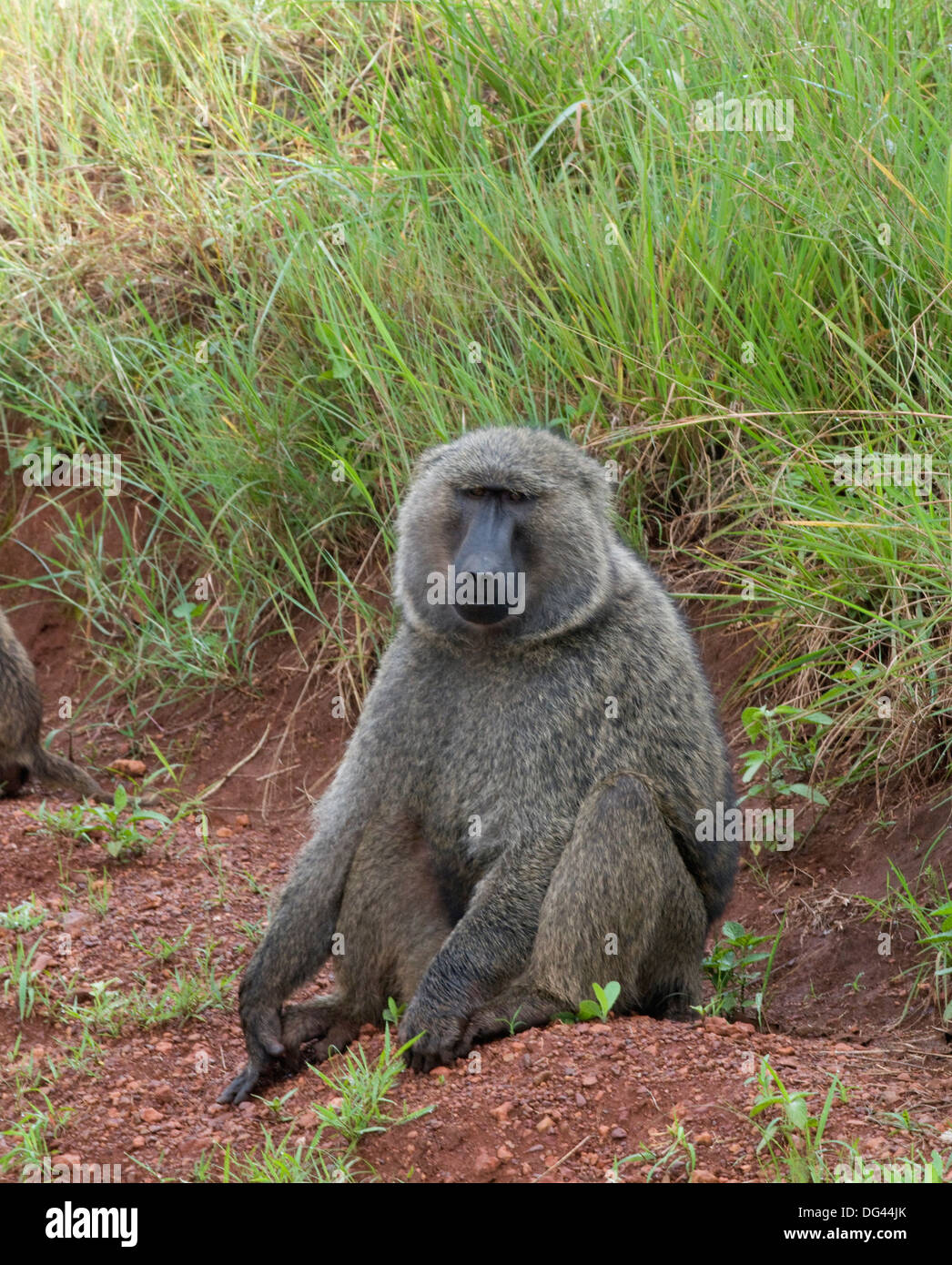Alpha Male Olive (Anubis) Baboon Papio anubis Cercopithecinae Southern Akagera National Game Reserve Rwanda Central Africa

Image details
Contributor:
Roland Pargeter / Alamy Stock PhotoImage ID:
DG44JKFile size:
28.8 MB (1.9 MB Compressed download)Releases:
Model - no | Property - noDo I need a release?Dimensions:
2848 x 3539 px | 24.1 x 30 cm | 9.5 x 11.8 inches | 300dpiDate taken:
16 January 2012Location:
Southern Akagera National Game Park Rwanda Central AfricaMore information:
Alpha Male Olive (Anubis) Baboon Papio anubis Cercopithecinae Southern Akagera National Game Reserve Rwanda Central Africa. The olive baboon is named for its coat, which, at a distance, is a shade of green-grey. Its alternate name comes from the Egyptian god Anubis, who was often represented by a dog head resembling the dog-like muzzle of the baboon. At closer range, its coat is multicolored, due to rings of yellow-brown and black on the hairs. The hair on the baboon's face, however, is coarser and ranges from dark grey to black. This coloration is shared by both sexes, although males have a mane of longer hair that tapers down to ordinary length along the back. Besides the mane, the male olive baboon differs from the female in terms of size and weight and canine tooth size; males are, on average, 70 cm (28 in) tall while standing and females measure 60 cm (24 in) in height. The olive baboon is one of the largest species of monkey; only the Chacma baboon and the mandrill attain similar sizes. Males establish their dominance more forcefully than females. A male will disperse, or leave his natal group and join another group, after reaching sexual maturity. Adult males are very competitive with each other and will fight for access to females. Higher dominance means better access to mating and earlier access to food, so naturally a great deal of fighting over rank occurs, with younger males constantly trying to rise in position. Because females stay with their groups their entire lives, and males emigrate to others, often a new male will challenge an older one for dominance. Frequently, when older baboons drop in the social hierarchy, they will move to another tribe. The younger males who pushed them down will often bully and harass them. Older males tend to have more supportive and equal relationships than those of the younger males. The former may form coalitions against the latter. Olive baboons communicate with various vocalizations and facial expressions.